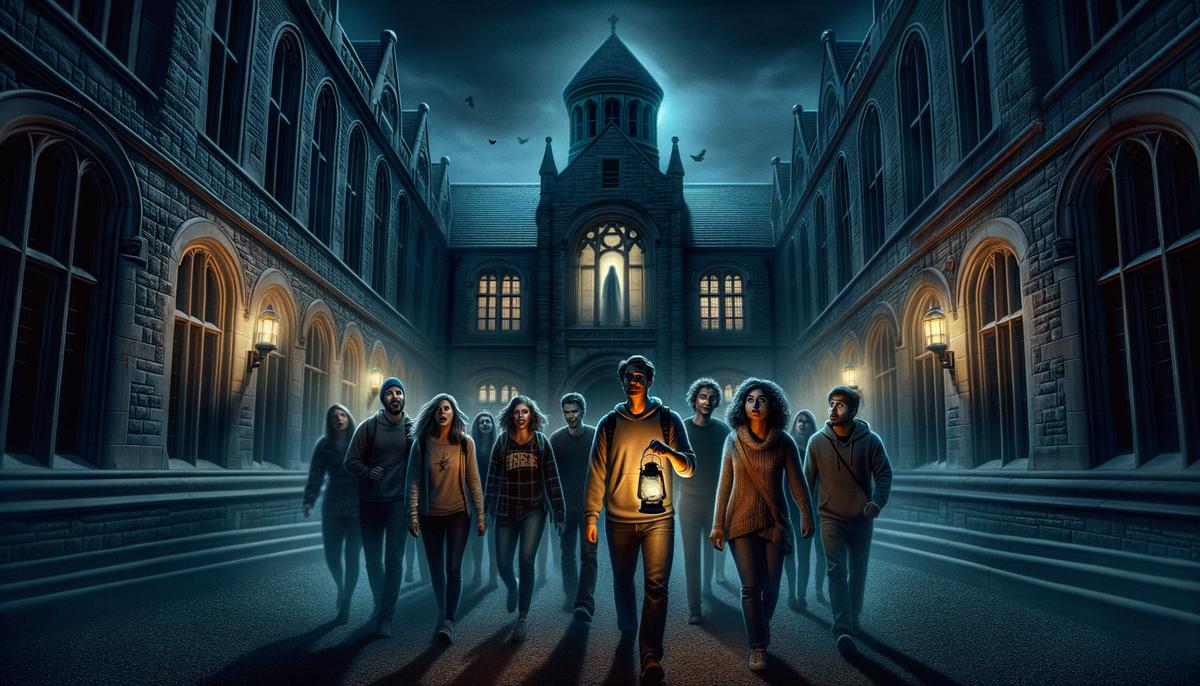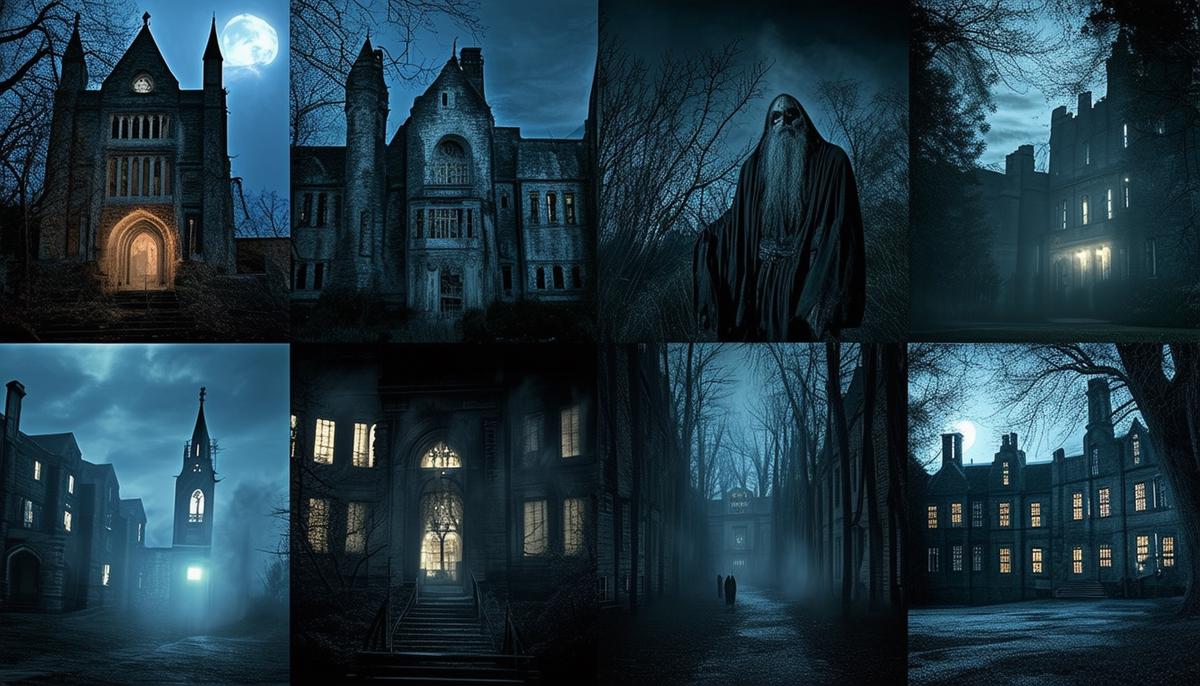Haunted Universities: Where History and Mystery Meet
Picture this: The campus looms large, hidden in thick fog. Gothic spires pierce the night sky, casting shadows on cobblestone paths. Ancient oak leaves whisper, as if telling old stories. A chill runs down your spine – not from the cold, but from feeling you're not alone. Welcome to the world of haunted universities, where past and present collide.
At Ohio University, the ghost of a former asylum patient wanders Wilson Hall. At Fordham University, students tell of howling winds and a shadowy monk near the old church. The University of Southern California's cinema school feels heavy with the spirit of a young film student.
Boston University's Charlesgate Hall, once a luxury hotel, now houses ghostly whispers of former guests. At Indiana University, the "Lady in Blue" appears and vanishes in Read Hall. The University of Alabama has a Civil War soldier's ghost marching by the old observatory.
The University of Texas at Austin's Littlefield Home is guarded by Spanky, a ghost who plays the piano at night. At Pennsylvania State University, Frances Atherton's spirit watches over her husband's grave from Old Botany Building.
These eight universities blend history and haunting. Next time you're on one of these campuses, listen closely. You might end up with a spooky tale of your own to tell.
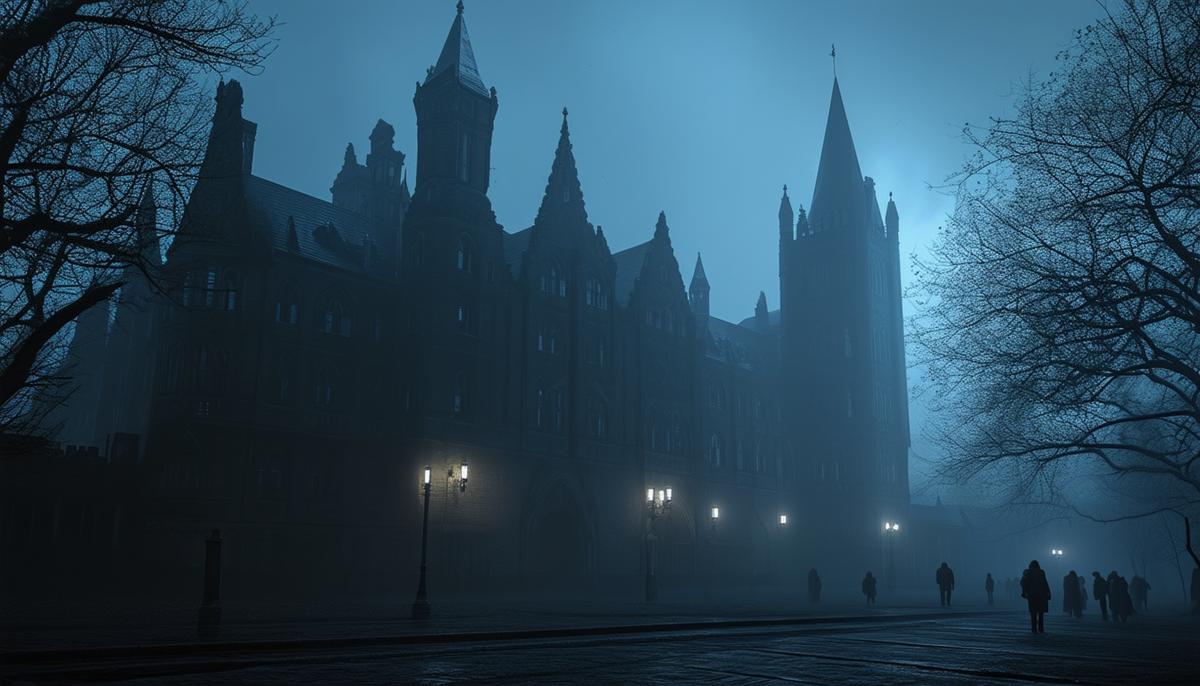
Stanford University: The Ghost of Jane Stanford
At Stanford University, Jane Stanford's ghost haunts the campus she helped create. Jane and her husband Leland founded the university in 1885, after their son Leland Jr. died. Jane poured her grief into the school, making it a tribute to her son.
In 1905, Jane died suddenly from poison. Some say it was an accident, others whisper of foul play. Her restless spirit now roams Stanford's halls.
"Imagine walking through the Main Quad at night. Books falling off shelves, cold spots moving through rooms, and the soft sound of old-fashioned footsteps…"
In the Museum of Art, Jane's portrait seems to watch visitors, sending chills down their spines.
Even the gardens aren't safe. At dusk, you might see a figure in old-fashioned clothes vanish into the mist. Near the Stanford Family Mausoleum, people claim to hear Jane's faint, sad cries.
Jane Stanford's ghost reminds us of the university's past and the sacrifices that shaped it. If you visit Stanford, be alert. You might feel Jane's spirit watching over the school she loved so much.
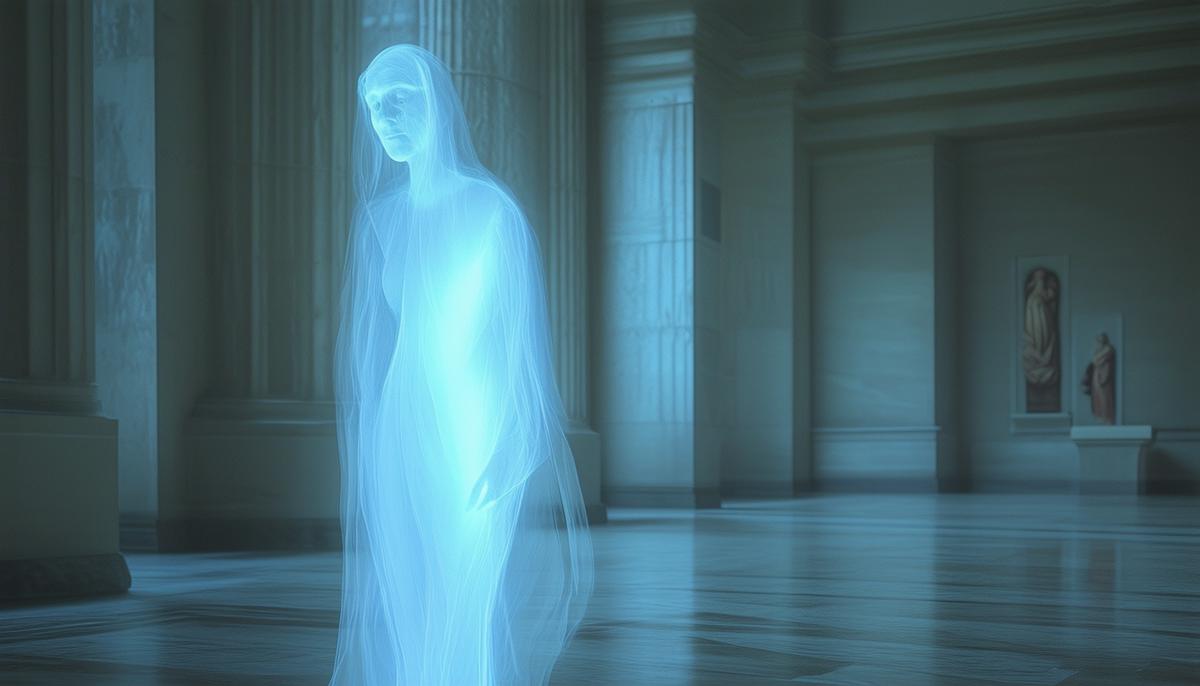
Ohio University: The Ridges Asylum
Ohio University's darkest haunt is The Ridges, once known as Athens Lunatic Asylum. Opened in 1874, it started as a place to help mentally ill patients. Over time, it became known for overcrowding and poor treatment. Now abandoned, it's a reminder of forgotten lives and eerie tales.
Imagine walking through empty halls where paint peels off walls and broken windows let in moonlight. Every creak and drip echoes, sending chills up your spine. This is where ghost stories come to life.
The most famous story is about Margaret Schilling, a patient who vanished in 1978. Weeks later, her body was found in an empty ward. Her outline left a stain on the floor that can't be cleaned away.
- People report hearing whispers, footsteps, and cries in the halls.
- Some see shadows or pale faces in windows.
- The cemetery behind the building holds over 1,900 graves, mostly patients whose families never claimed them.
Dr. Thomas Kirkbride, who helped design the asylum, is said to haunt the grounds too. People claim to see a man in old-fashioned clothes walking around or passing through walls.
Students who go near The Ridges at night report feeling cold touches, having bad dreams, and feeling watched. So if you visit Ohio University, be careful around The Ridges. You might leave with your own ghost story to tell.
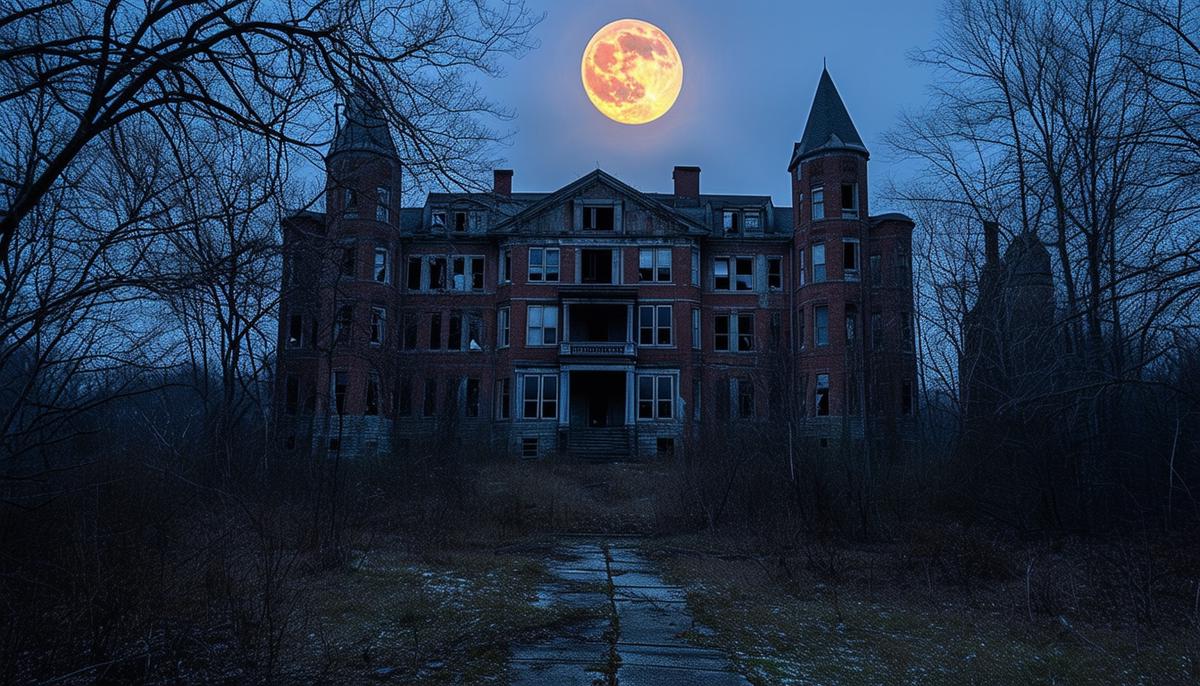
University of Georgia: The Ghostly Librarian
At the University of Georgia, a library is home to more than just books. It's said to be haunted by the Ghostly Librarian, Eleanor.
Eleanor was a quiet, careful librarian in the early 1900s. She loved books but was very sad and lonely. One day, she decided to end her life in the library she loved so much.
Now, strange things happen in the library at night. Students hear pages turning when no one's there. Lights flicker on their own. Some see Eleanor gliding through the bookshelves in a long, dark dress, looking sad.
"A night guard once heard crying from the third-floor archives. When he went to look, the room was empty and very cold. One book lay open on the floor."
Books often move by themselves, especially poetry and love stories – Eleanor's favorites. Imagine studying late at night when a book falls off a shelf with no one around!
Some people don't believe these stories. They say it's just stressed students using their imagination. But the odd events keep happening, making the library famous for being spooky.
If you visit the University of Georgia library at night, remember Eleanor. Be brave, but also be respectful. You never know how a ghost might react to visitors in her library!
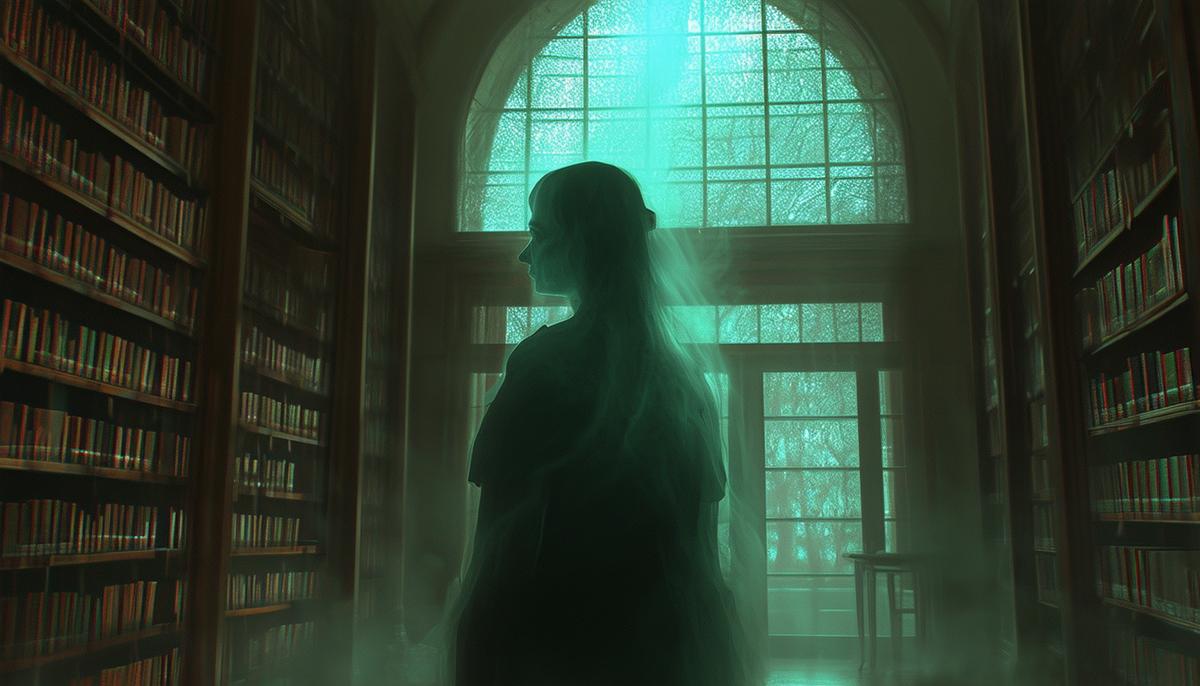
Fordham University: The Hauntings of O'Hare Hall
At Fordham University, O'Hare Hall stands as a place of both learning and supernatural mystery. Its old brick walls and ivy hide more than just classrooms – they're home to ghostly tales that have been passed down for years.
The main ghost story is about Thomas, a former student who sadly took his own life in his dorm room. People say his spirit still roams the halls, especially at night when it's quiet. Students have reported:
- Hearing soft crying from empty rooms
- Feeling like they're being watched
- Sudden cold spots, as if someone walked by
Room 304 is known as the most haunted. Students staying there have woken up feeling a heavy weight on their chest, unable to move. Even skeptics who've tried to disprove the ghost stories have left shaken.
Other spooky events in O'Hare Hall include:
- The "Phantom Knocker" – knocking on doors at night, but no one's there
- A shadowy figure seen floating near the stairs
- Flickering lights and books moved around in study areas
- Students feeling a light touch on their shoulder or hearing their name whispered
These stories have become a big part of Fordham's history. As one student put it,
"Whether you believe in ghosts or not, O'Hare Hall's eerie atmosphere is enough to make anyone look over their shoulder at night."
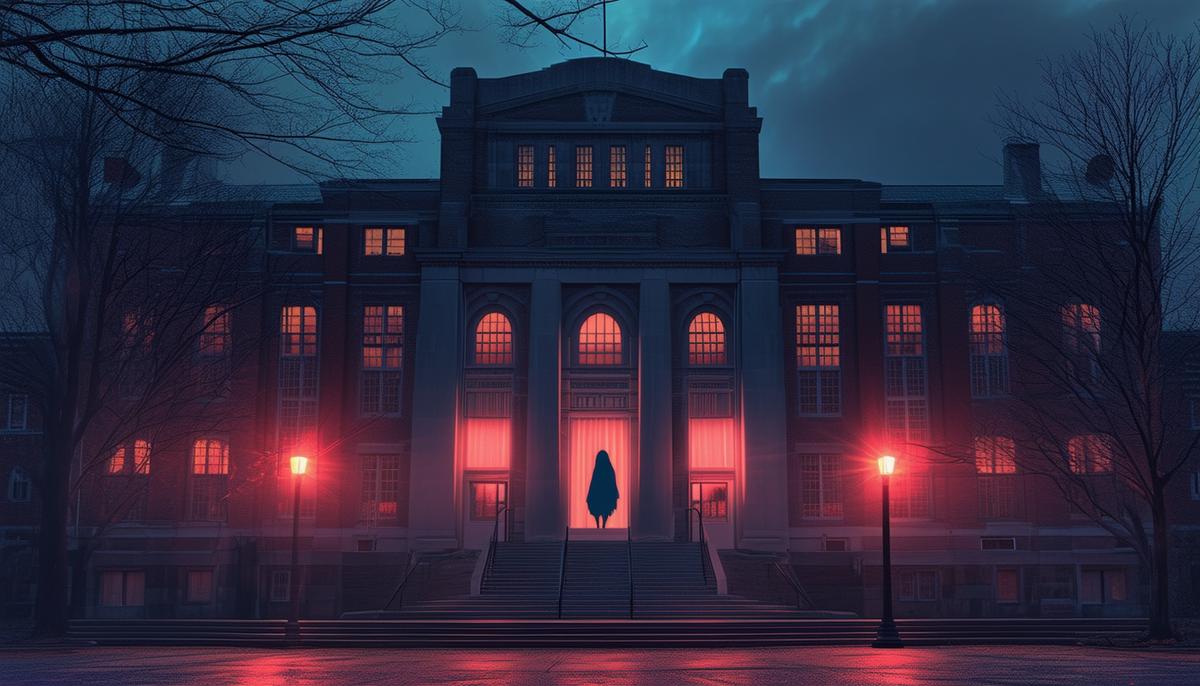
University of Notre Dame: The Ghost of Washington Hall
At the University of Notre Dame, Washington Hall is known for more than just its beautiful theater. It's also home to some spooky stories about ghosts, especially one famous spirit.
The main ghost is said to be George Gipp, a legendary football player who died young in 1920. People say his spirit still hangs around the hall he loved when he was alive. Students and staff have reported strange things happening:
- The sound of a football being kicked when no one's there
- Old music playing softly on its own
- Seeing Gipp's ghost in his old football uniform
But Gipp isn't the only spirit people talk about. The hall has a long history of plays and music shows, and some say the ghosts of old performers come back to practice. People have heard voices and seen figures on the empty stage at night.
Other spooky events in Washington Hall include:
- The sound of someone writing when no one's there
- Lights turning on and off by themselves
- A ghostly woman in white looking for her last show
- Shadowy figures seen sitting in the balcony
These ghost stories are a big part of Notre Dame's history now. Whether you believe them or not, they add an extra chill to late nights in Washington Hall.
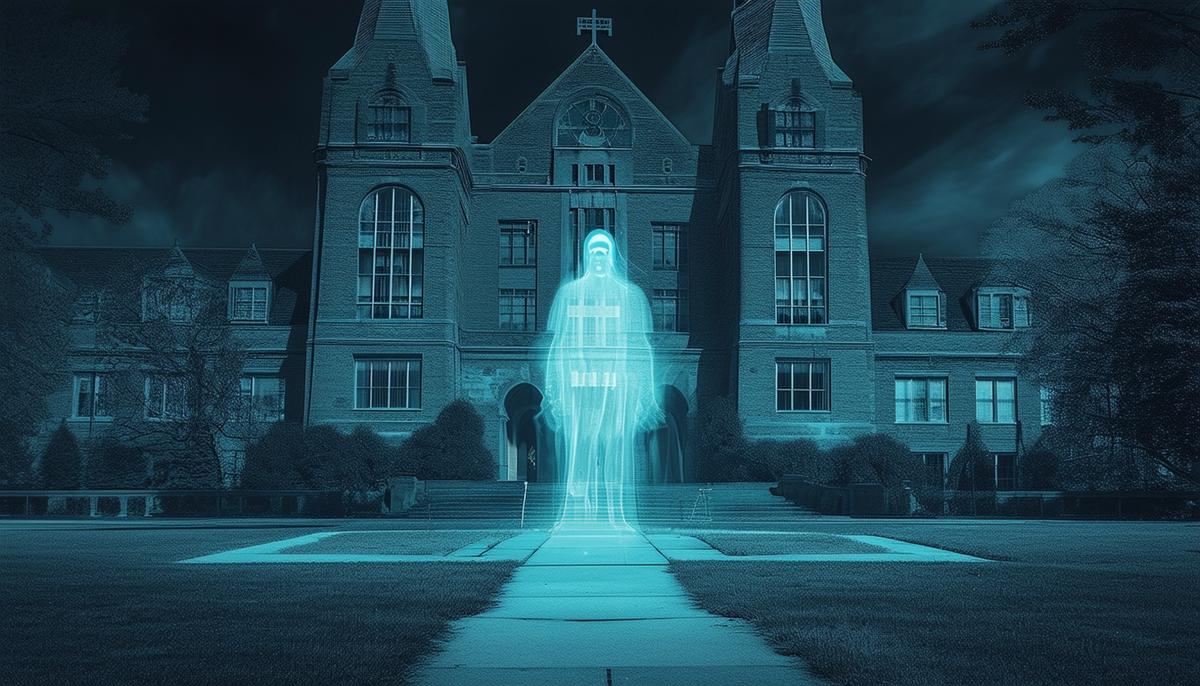
Smith College: The Room Where Time Stands Still
At Smith College in Northampton, Massachusetts, there's a dorm room that's said to be trapped in time. Students who've stayed there tell strange stories about clocks that don't move and other weird events.
The room looks normal during the day, but at night, things get spooky. Students have reported:
- Clocks always showing 10:15, no matter what time it really is
- Watches and phones freezing when brought into the room
- Waking up feeling like time isn't passing
One of the first stories about the room comes from a student named Elizabeth in the early 1900s. Her watch stopped working every time she entered the room but worked fine everywhere else on campus.
Other weird things people have experienced in the room:
- Seeing their reflection move on its own in the mirror
- Glimpses of a ghost in old-fashioned clothes moving slowly
- Feeling disconnected from time even after leaving the room
No one knows why the room is like this. Some think it's a doorway to another time, while others believe something sad happened there long ago. As one student described it,
"It's like stepping into a bubble where time doesn't exist. You feel it the moment you cross the threshold."Whatever the reason, the room remains a spooky mystery at Smith College.
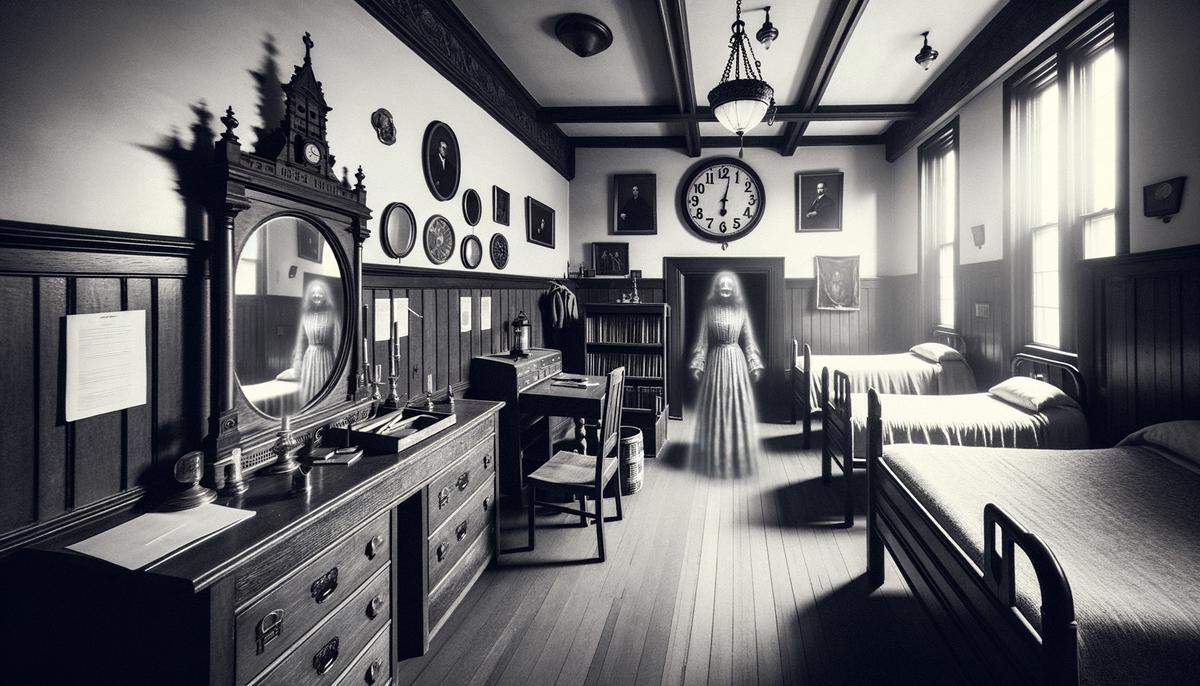
Gorgas Library: A Haunting Haven of Learning
Gorgas Library at the University of Alabama is more than just a place to study—it's a building where the past seems to linger. In the heart of campus, its grand look and historic feel give it both charm and an eerie sense of something otherworldly.
Picture stepping into the library as the sun sets, golden light streaming through high windows. The air smells of old books, with a strange chill that makes you shiver. It's quiet, broken only by turning pages and faint humming lights.
One famous ghost is Amelia Gorgas, the library's namesake and former head librarian. Students often feel like they're being watched while studying late. Imagine feeling eyes on you as you work, knowing you're not quite alone.
The upper floors are even spookier. People have heard phantom footsteps in empty hallways. Imagine walking and hearing someone—or something—following you, your heart racing as you turn to find no one there.
"I swear I felt a presence behind me, but when I looked, there was nothing but empty space," recalls one student.
In a third-floor study room, some have seen a faint figure in the window—a woman in old-fashioned clothes, staring into the night. It's a sight that leaves a lasting, scary memory.
The basement is dark and full of history. Staff have heard unexplained scratching on walls and whispers from nowhere. Picture working late in such a creepy place, surrounded by ghostly sounds.
In quiet reading rooms, the air can suddenly turn icy cold, as if Amelia herself is passing by. Imagine feeling that cold touch on your skin while you're deep in a book.
Even the archives have strange happenings. Old documents are found moved, lights flicker, and the scent of roses—linked to Amelia's spirit—drifts through the air.
So if you visit Gorgas Library at night, be alert. The quiet isn't just silence; it's the echo of past lives and untold stories. Respect the whispers you hear, for they are the guardians of countless tales.
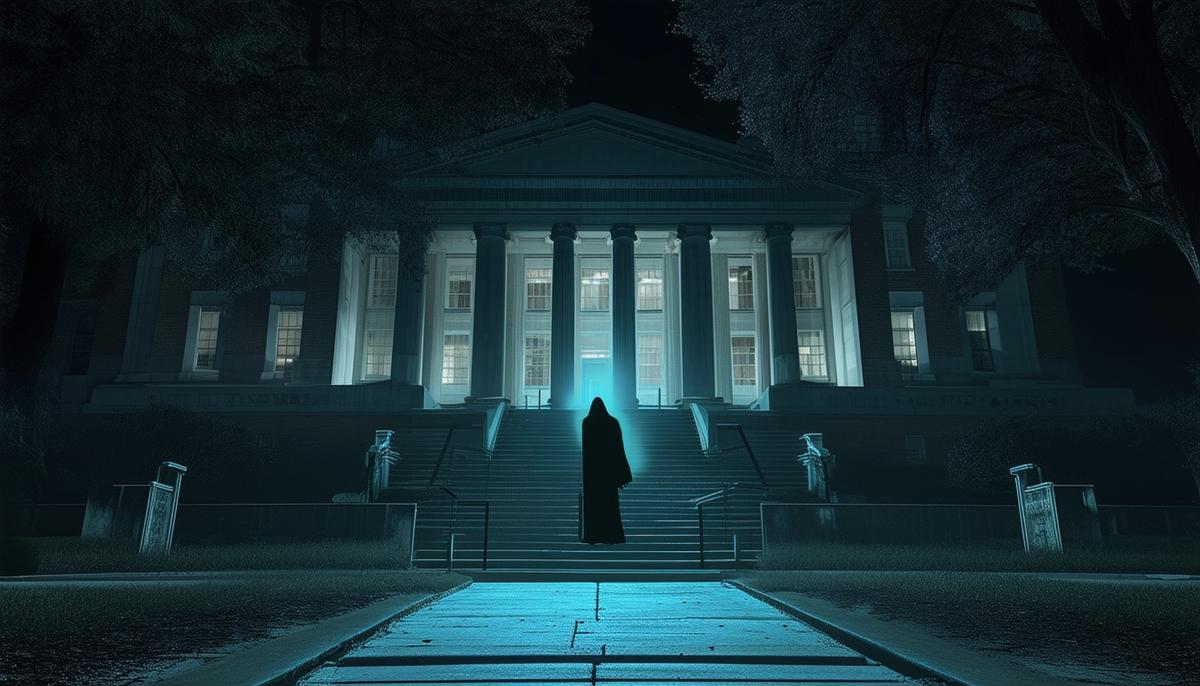
University of Tennessee: Spirits of Highgate Cemetery
At the University of Tennessee, Highgate Cemetery is where history meets the supernatural. Near campus, its old tombstones and gloomy trees create a spooky atmosphere.
Imagine walking through at dusk, mist settling around the graves. Many people feel a strange presence here, like they're not alone.
One famous ghost is James, a Confederate soldier. Picture seeing his sad figure in a torn uniform, wandering the paths before fading away.
There's also a "Lady in Gray" who roams the oldest parts of the cemetery. Imagine catching a glimpse of her gliding past, her eyes filled with sadness.
"I saw her just for a moment, but her sorrow was palpable," whispers a local tour guide.
Students talk about "Whispering Winds" at night, carrying faint voices that seem to call out names. Imagine straining to hear these whispers on the breeze.
One Halloween, students gathered near an old tomb heard footsteps in the leaves, but saw no one. Picture their fear as they felt something unseen coming closer.
Strange lights are often seen near the cemetery's edges—glowing orbs that vanish without a trace. Imagine watching these lights blink out one by one in the darkness.
Even nearby dorms are affected. Students hear faint crying or laughter from their walls at night. Picture lying in bed, hearing children playing when it should be quiet.
These ghost stories are a big part of the University of Tennessee's history. Whether you believe in ghosts or not, Highgate Cemetery's haunted past makes you think about life's mysteries.
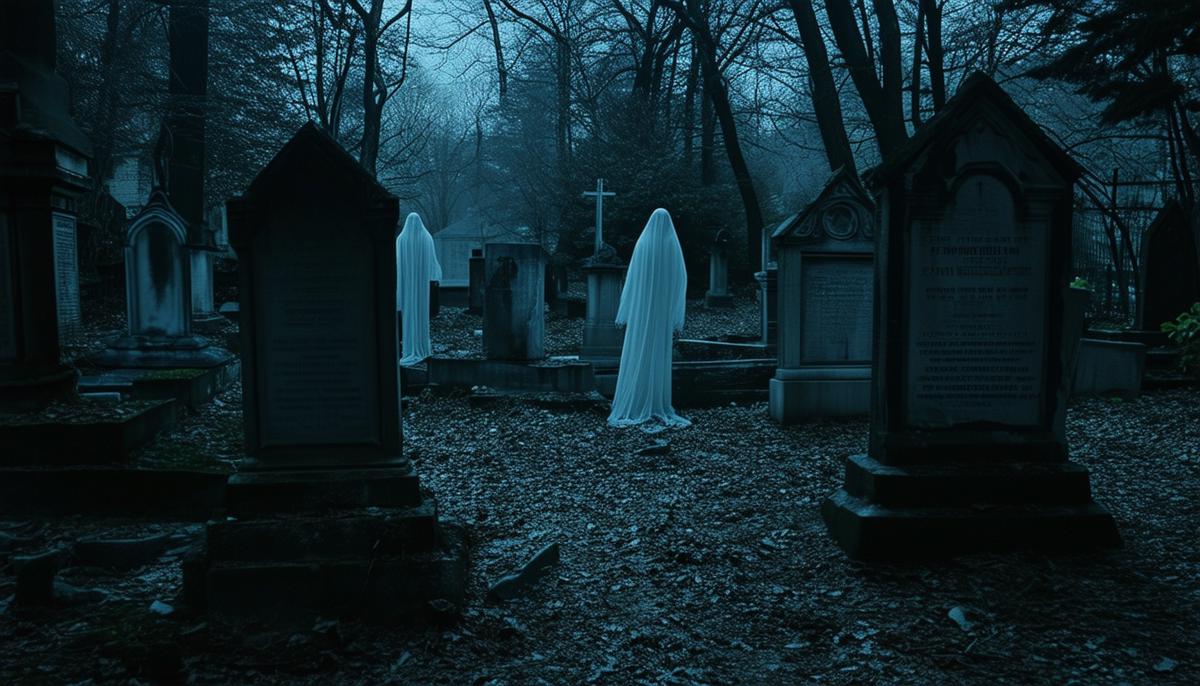
Conclusion: How Hauntings Affect Us
These ghost stories do more than just scare us—they become part of each university's culture. They shape how students think about their school and create shared experiences.
Universities often include these tales in campus tours. Imagine walking down spooky hallways with a guide, hearing stories that make the hairs on your neck stand up.
These legends bond students together. New students learn the stories from older ones, keeping the traditions alive. Picture excited freshmen listening to scary tales in dim dorm rooms.
Ghost stories even become part of academic life. Students write papers about them, and professors discuss them in class. Imagine a lecture exploring both history and the supernatural.
Many schools host events based on these stories, like haunted house tours or Halloween parties. These bring the community together in a fun, spooky way.
For some, these tales are just thrilling stories. For others, they're reminders of real people and events from the past. They can teach us about history, like old mental hospitals or war times.
"These stories are more than just entertainment—they're a bridge to our past," explains a university historian.
Most importantly, these ghost stories give students a sense of belonging. They connect past and present students through shared experiences. When students graduate, they take these stories with them, sharing them for years to come.
So next time you're in an old university building and feel a chill, remember these ghost stories. They're more than just scary tales—they're part of the school's soul, linking people through fear, curiosity, and maybe even a little belief in the unknown.
